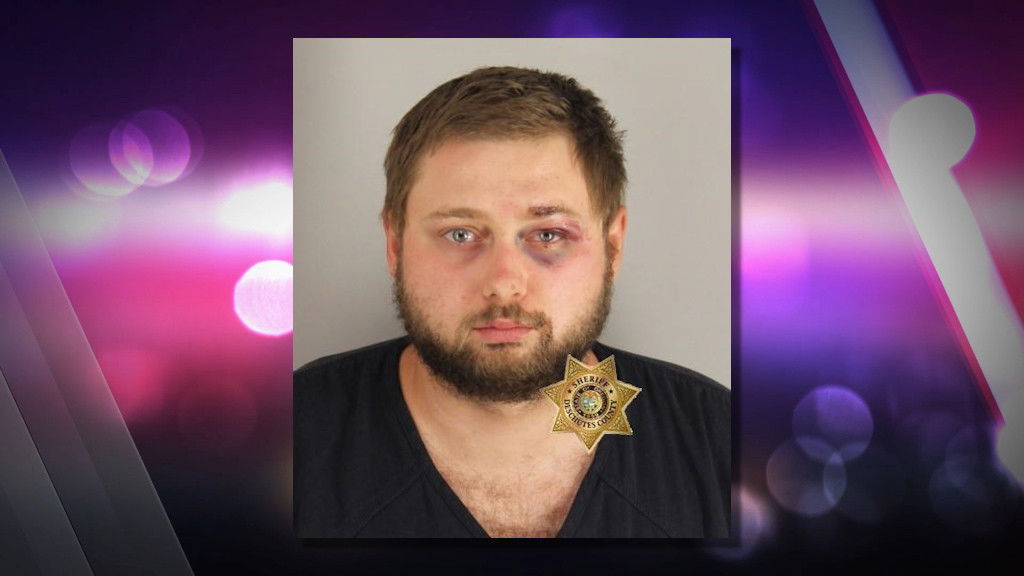Hummel vows to fight Cranston lawyer’s bid for murder defendant’s release on bail

(Update: DA says he'll 'vigorously oppose' motion to release Cranston on bail)
Defense attorney says Washington 'committed violent, totally unprovoked assault'
BEND, Ore. (KTVZ) – Deschutes County District Attorney John Hummel said Monday his office will "vigorously oppose" a motion filed by the attorney for Ian Cranston that seeks the release on bail of the Redmond man accused of murder in the fatal shooting of Barry Washington Jr. outside a downtown Bend bar last fall.
Late last week, attorney Kevin Sali filed an 11-page motion for his release, detailing what he says witnesses and video cameras showed happened that night.
Cranston has pleaded not guilty to second-degree murder, manslaughter and assault charges in the Sept. 19 shooting death of the 22-year-old Washington. He’s been held without bail at the Deschutes County Jail, since his re-arrest on the more serious charges, and a November 2022 trial has been set.
"We’ve been anticipating Mr. Cranston to file a motion requesting the court to set bail in the case," Hummel told NewsChannel 21. "We oppose Mr. Cranston’s release and in court will vigorously argue that he remain in custody until his trial."
A motion hearing is set for Tuesday afternoon on the request by Washington's mother for return of some of his personal items, including his cellphone; prosecutors have now filed a motion opposing that request, saying the items may have "evidentiary value" for his upcoming trial, and the cellphone was seized under a warrant.
Sali is seeking a half-day hearing on his motion for Cranston's release on bail, claiming the evidence in the case "does not meet the high standard established under Oregon constitutional and statutory law for a defendant to be held without bail.”
Sali has claimed since September that his client acted in self-defense after Washington physically attacked Cranston and a friend after they went to the Capitol bar with Cranston’s fiancée.
In the more detailed description of what occurred, based on witness accounts and video footage, Sali said Washington, who also was at the bar, had been “behaving erratically and aggressively,” and that he was intoxicated, with a blood-alcohol level later measured at 0.195%.
He said Washington made obscene comments and gestures to a group of three police officers about a half-hour before he expressed an interest in Cranston’s fiancée, who told him they were engaged, showed him her ring -- and that he then gave her a brief hug.
Minutes later, after they all had left the bar, Sali said Washington again verbally propositioned Cranston’s fiancée, and she again declined, at which point the group asked Washington to leave them alone, but he “continued to press the issue” with her.
Shortly after midnight, Sali said, “Washington suddenly and without any provocation attacked Cranston … with two powerful, closed-fist blows to the head,” causing a head injury. The lawyer said “Washington raised his arm and made a series of threatening gestures toward him,” by which time Cranston – who had a concealed handgun license – was holding his gun, and displayed it to Washington to “deter … the assault.”
But the threats continued, he claimed, and Washington “lunged towards (Cranston’s friend) and punched him in the face.”
“Then, Washington turned at and squared toward Cranston, who was standing only a few feet away, with his handgun still drawn and visible,” the motion states. “It was at this point that Cranston finally fired a single shot at Washington. The round struck Washington in his midsection, stopping the assault.”
“Once it became clear that the threat had ended, Cranston immediately moved to Washington and began rendering aid and calling for help,” Sali stated.
The lawyer said the evidence won’t be enough for the state to prove there’s a “strong likelihood” of conviction on a murder charge, or “disproof of self-defense.”
“Washington committed a violent, totally unprovoked assault against Cranston,” Sali wrote. “Washington had absolutely no right or justification to do that. And Cranston had no legal obligation to allow a large, powerful man to continue viciously striking him in the head.”
“After Washington began the assault and gave every indication of an intent to continue it, Cranston had a clear legal right to draw his firearm in an attempt to deter his attacker,” the defense attorney says. “As the indisputable video evidence shows, the single shot was fired only after Washington – having clearly seen that Cranston was armed – disregarded that fact and, completely undeterred, continued his assaultive conduct.”
In a statement to media, Sali added: "On behalf of Mr. Cranston, and particularly in light of the false and inflammatory public statements made previously by the District Attorney’s office, we are immensely grateful that the events of that evening were comprehensively and accurately captured on video by multiple cameras. For our part, we will continue to make our case in court, where it belongs, and based on the evidence, as it should be."
